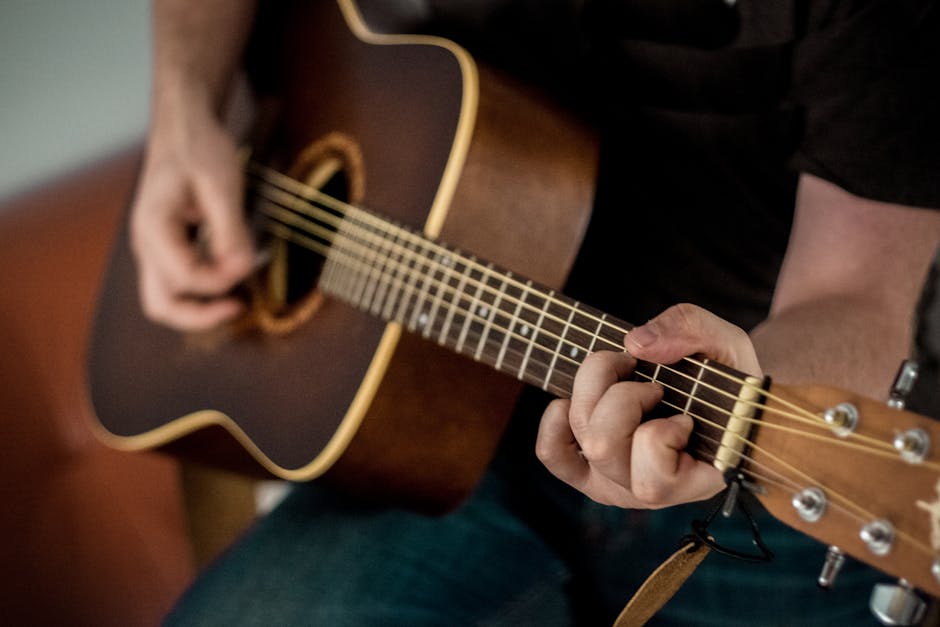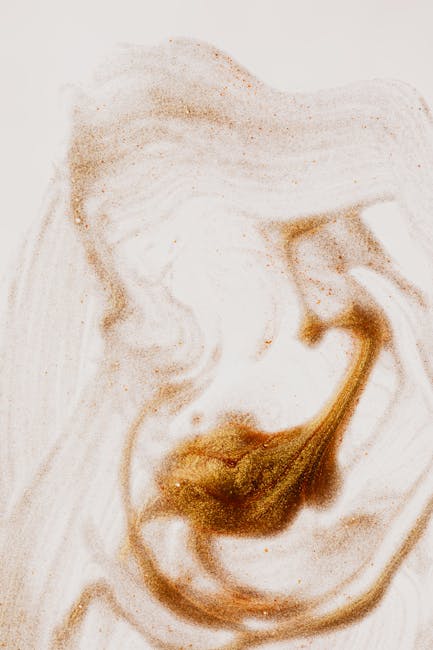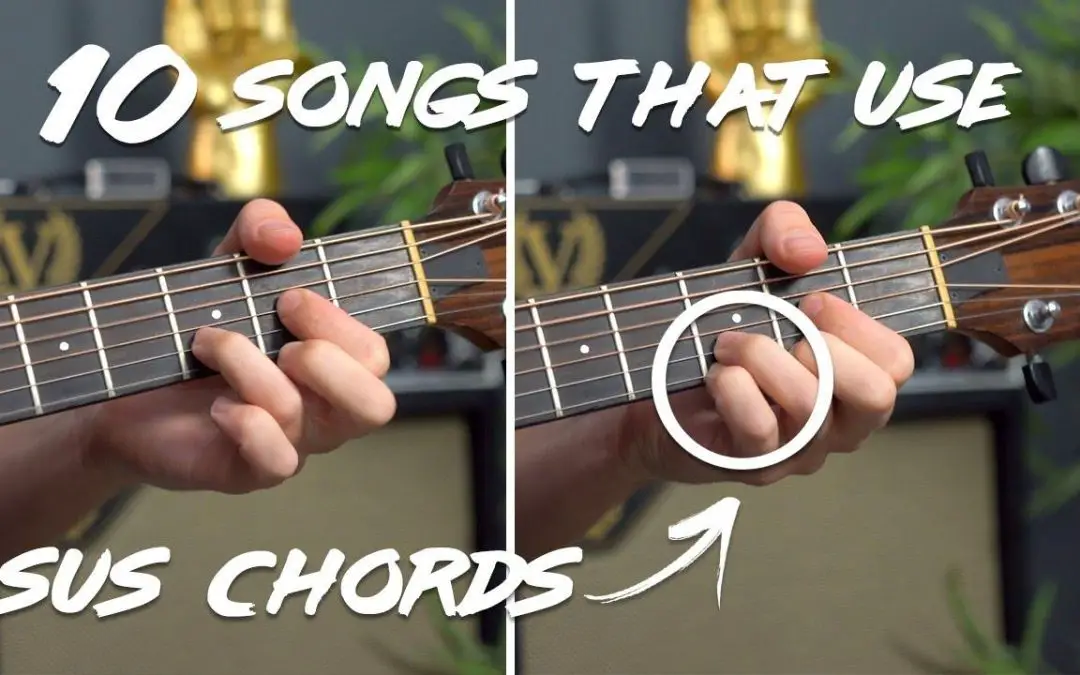Have you ever found yourself strumming your guitar along to a song, only to realize you’re stuck playing the same three chords over and over again like a broken record? Fear not, fellow guitarists, for we are about to embark on a journey to conquer the mysterious realm of chord progressions. Get ready to unleash your inner guitar god and leave your audience begging for an encore, as we dive into the ins and outs of mastering chord progressions in this rockin’ guide for guitarists. So grab your guitar, crank up the amp, and let’s get ready to rock…and roll through those chord progressions like a boss!
Contents
- 1 Understanding the Foundation of Chord Progressions
- 2 Exploring Common Chord Progressions in Popular Music
- 3 Navigating Through Major and Minor Key Progressions
- 4 Incorporating Advanced Chord Progressions for Dynamic Compositions
- 5 Techniques for Smooth Chord Transitioning
- 6 Expanding Your Repertoire with Modal Interchange and Secondary Dominants
- 7 Creative Approaches to Personalizing Standard Chord Progressions
- 8 FAQs
- 9 Stay Tuned for More Chord-tastic Adventures!
Understanding the Foundation of Chord Progressions
If you’ve ever wondered why certain songs make you want to dance, cry, or run away screaming, you might be surprised to learn that it all comes down to chord progressions. Without them, music would sound like a chaotic mess of noise – like a toddler banging on a piano with no rhyme or reason. But fear not, dear reader, for we are here to guide you through the mysterious world of chord progressions.
At its core, a chord progression is simply a series of chords played in a specific order. Think of it like a recipe - you wouldn’t just throw random ingredients together and hope for the best (well, maybe you would, but that’s a discussion for another day). Each chord in a progression has a purpose, just like each ingredient in a recipe serves a specific role. And just like following a recipe can result in a delicious meal, following a chord progression can result in a beautiful piece of music that hits you right in the feels.
But how do musicians come up with these magical progressions, you ask? It’s a bit like a mad scientist mixing chemicals in a lab – except instead of blowing things up, they’re creating sonic masterpieces. Some common techniques include:
- Circle of fifths: This is like the Holy Grail of chord progressions, a magical circle that helps musicians navigate through the vast sea of musical possibilities.
- Seventh chords: Adding a little extra spice to your chords can take your progression from bland to grand in no time.
- II-V-I: No, this is not a secret code – it’s actually a classic progression that has been used in countless jazz and pop songs.

Exploring Common Chord Progressions in Popular Music
Ever wonder why all your favorite songs sound eerily similar? It’s because they probably are! Popular music has a knack for recycling the same old chord progressions over and over again. But fear not, dear music enthusiast, for today we embark on a journey to explore some of the most overused chord progressions in the history of popular music.
Let’s start with the classic I-V-vi-IV progression, also known as the ‘Pachelbel Progression’. This bad boy has been used in everything from Pachelbel’s Canon in D to countless pop hits like “I’m Yours” by Jason Mraz. It’s like the chicken soup of chord progressions – comforting, predictable, and always hits the spot.
Next up, we have the ii-V-I progression. This jazz staple has infiltrated mainstream music with hits like “Don’t Stop Believin’” by Journey and “Someone Like You” by Adele. If this progression were a person, it would be that annoying friend who always knows how to smooth things over with just the right words.
And last but not least, we cannot forget the vi-IV-I-V progression. This bad boy has been the backbone of more chart-toppers than we can count. From “With or Without You” by U2 to “Let It Be” by The Beatles, this progression is like the Swiss Army knife of chord progressions – versatile, reliable, and always ready to save the day.

So you’ve embarked on the treacherous journey of . Fear not, brave musician, for I am here to guide you through the murky waters of musical theory with wit and charm.
First things first, let’s talk about major keys. These are like the shiny, happy siblings of the musical world. Think of them as the chipper cheerleaders of the key progression party, always looking on the bright side of life. They are bright, cheerful, and oh-so-versatile.
Now, let’s delve into the world of minor keys. These are the brooding rebels of the musical family, always dressed in black and moping in the corner. But don’t let their melancholy facade fool you, minor keys can pack a punch and add depth and emotion to your compositions.
When transitioning between major and minor key progressions, remember to keep things interesting and unexpected. Spice up your compositions with unexpected chord changes, modulations, and key shifts. Just like adding a dash of hot sauce to your bland pasta, a little musical experimentation can go a long way.

Incorporating Advanced Chord Progressions for Dynamic Compositions
Are you tired of your compositions sounding stale and predictable? Want to take your music to the next level with some advanced chord progressions? Look no further, we’ve got you covered!
When it comes to spicing up your compositions, advanced chord progressions are key. Don’t settle for the same old I-IV-V progressions – dare to be different! Try experimenting with more complex chords like diminished and augmented chords to add a touch of sophistication to your music.
Looking to create some truly dynamic compositions? Mix things up by incorporating modal interchange and borrowed chords. Shake things up with unexpected chord changes and keep your listeners on their toes!
Remember, the sky’s the limit when it comes to incorporating advanced chord progressions into your compositions. Embrace the challenge, step out of your comfort zone, and watch your music soar to new heights. Get ready to wow your audience with your fresh, innovative sound!
Techniques for Smooth Chord Transitioning
So you’ve finally mastered playing individual chords on your guitar, but now you’re faced with the dreaded task of transitioning smoothly between them. Don’t fret (pun intended), we’ve got you covered with some techniques that will have you smoothly gliding from one chord to the next in no time!
First, make sure you’re positioning your fingers properly on each chord. It’s like trying to fit all the pieces of a jigsaw puzzle together – except your fingers are the puzzle pieces and the chords are, well, the puzzle. Keep practicing until you find the perfect placement for each finger. Hint: using the tips of your fingers instead of the pads can really help with accuracy!
Next, focus on using your thumb as a pivot point when transitioning between chords. It’s like having a little helper that guides your fingers to the right position. Think of your thumb as the traffic conductor of your hand – directing where each finger needs to go without causing any traffic jams. Pretty cool, huh?
Lastly, don’t underestimate the power of muscle memory. Your fingers are smart cookies and will eventually learn the patterns of each chord transition with enough practice. It’s like teaching an old dog new tricks, except in this case, the dog is your hand and the trick is playing badass chords like a pro. So keep at it, and before you know it, you’ll be transitioning between chords like a rockstar!
Expanding Your Repertoire with Modal Interchange and Secondary Dominants
So you’ve got your basic chords down, but now it’s time to kick things up a notch with some fancy music theory tricks. Modal interchange and secondary dominants are the secret weapons of the seasoned musician, so buckle up and get ready to expand your musical horizons!
With modal interchange, you can borrow chords from a different scale to add some unexpected twists and turns to your progressions. Mix and match major and minor chords like a musical mad scientist to create some truly unique sounds. Who needs boring old I-IV-V progressions when you can throw in a bVII or a bIII chord for some spicy flavor?
Secondary dominants are like the cool kids at the musical party – they show up uninvited but everyone loves them. These chords come from outside the key you’re playing in and serve to lead you to a different chord, creating tension and resolution in all the right places. Use them sparingly for maximum impact, or go wild and turn your song into a wild rollercoaster ride of harmonic surprises!
So go ahead, experiment with modal interchange and secondary dominants in your music. Break the rules, bend the norms, and watch as your compositions take on a whole new level of sophistication. Your audience will be in awe of your newfound musical prowess – just don’t forget to give credit to the sneaky chords that made it all possible!
Creative Approaches to Personalizing Standard Chord Progressions
So, you’re tired of playing the same old chord progressions like everyone else, huh? Well, fear not, my fellow musician! With a little creativity and ingenuity, you can breathe new life into those tired old progressions and make them your own.
One approach to personalizing standard chord progressions is to experiment with different voicings. Instead of playing the same boring old open chords, try adding some color by using inversions or extensions. Mix things up and see where it takes you!
Another fun way to jazz up those standard progressions is to add some unexpected chords into the mix. Throw in a diminished chord or a sus4 chord for a little twist that will keep your listeners on their toes. Don’t be afraid to break the rules and push the boundaries!
Lastly, don’t forget the power of rhythm and tempo in personalizing your chord progressions. Change up the strumming pattern or play around with different time signatures to give your music a unique feel. Remember, the only limit is your imagination, so go forth and get creative!
FAQs
How can I spice up my chord progressions?
Well, my friend, the key is to add some tasty extensions to your chords! Try throwing in some 7ths, 9ths, or even 13ths to really jazz up your progressions.
What’s the best way to memorize different chord progressions?
Ah, the age-old question! The best way to memorize chord progressions is to practice, practice, practice. Repetition is your best buddy when it comes to committing those progressions to memory.
How can I come up with my own unique chord progressions?
You’re a creative genius, so let your imagination run wild! Experiment with different chord shapes, inversions, and substitutions to create something truly unique to you.
What are some common chord progressions used in popular songs?
Oh, my dear music aficionado, there are so many to choose from! Some classics include the I-V-vi-IV progression, the bluesy I-IV-V, and the ever-popular ii-V-I jazz progression.
How important is it to understand music theory when it comes to mastering chord progressions?
Ah, music theory, the musician’s best friend! While you can certainly get by without a deep understanding of theory, knowing a bit about scales, intervals, and diatonic harmony can certainly take your chord progressions to the next level.
Stay Tuned for More Chord-tastic Adventures!
As you embark on your journey to mastering chord progressions, remember that practice makes perfect and laughter is the best chord therapy. Keep strumming, experimenting, and pushing yourself to new musical heights. Who knows, maybe one day you’ll be the next guitar hero rocking out with the best of them. Until next time, keep on playing and stay groovy, fellow chord conquerors!



